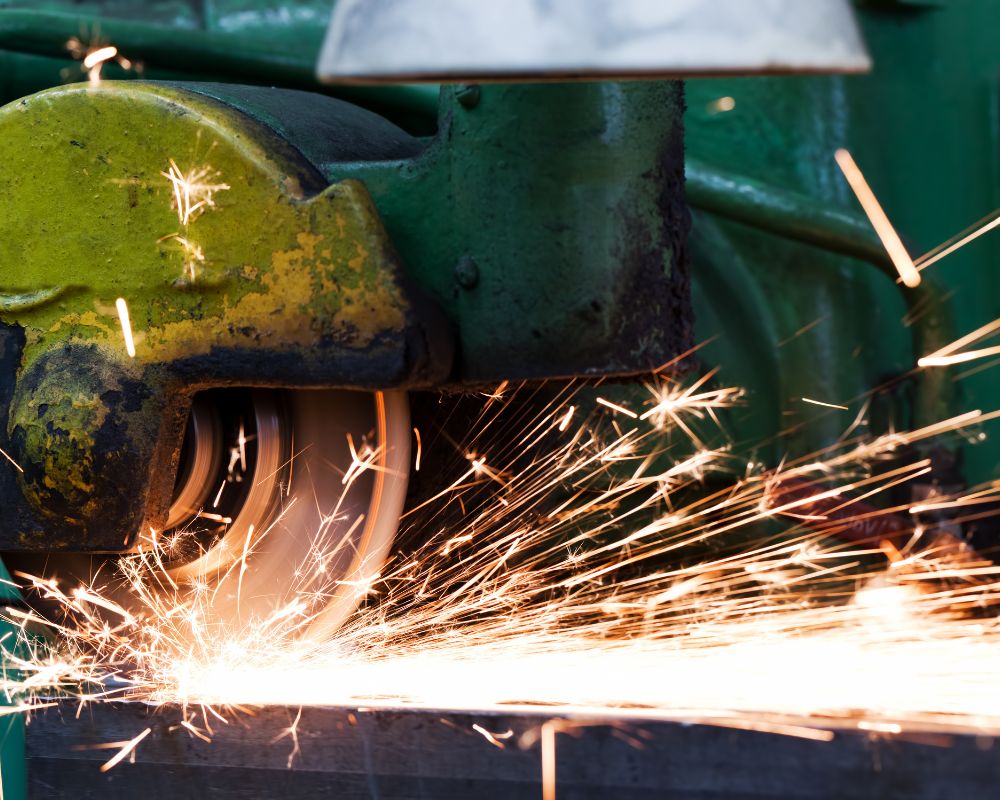As tough as diamond saw blades are, they are not perfect. They can be damaged if they aren’t used correctly. They can also suffer uneven wear, demonstrating a condition we call being out-of-round. If you check out our Safety and Instructions page, you’ll notice that we recommend never, under any circumstances, using an out-of-round diamond blade.
An out-of-round diamond blade not only does not cut properly, but it can also be dangerous. Always check your diamond blades before you begin work. If you notice any unusual vibrations or an unusual-looking cut, stop and check both your blade and saw to make sure everything is as it should be. If you cannot find the problem, set the equipment aside until you can get the problem fixed.
Uneven Segment Wear
A diamond blade is essentially made up of two elements: a steel core and the synthetic diamonds that do the work. Each of the diamonds, along with the metal they are attached to, are called segments. They should all be a uniform height throughout the life of the blade.
If one side is higher than the other on a certain portion of the blade, you are looking at an out-of-round situation. The different height segments mean that your blade is no longer concentric. It is this that causes the vibrations and the ragged looking cut.
Depending on the severity of the condition, there may be no saving the blade. It’s more important that you figure out what caused the out-of-round condition and fix it so that you don’t keep damaging blades. A diamond saw blade is too expensive to not address the problem.
Four Probable Causes
There are four probable causes of this particular condition. The first three have to do with the equipment while the fourth is related to the material being cut. All the problems are easily corrected if you learn to recognize them.
1. Worn Arbor Shaft
Should the arbor shaft begin to wear, it will no longer hold the diamond blade properly. It will allow for slight movement which could ultimately damage your blade during cutting. If this is the problem, you will notice half of the segments are high while the other half are low.
Some tool manufacturers suggest re-boring the arbor shaft if possible. We cannot comment as to whether this is a good idea. You might just want to replace the arbor shaft altogether.
2. Worn Bearings
Worn bearings are another problem that can cause the out-of-round condition. When bearings are worn, the blade does not rotate efficiently or consistently. Worn bearings should always be replaced.
This particular condition is characterized by something known as quartering. Rather than just seeing half of the segments high and the other half low, you’ll see that the blade is essentially divided into quarters. One quarter is high, the other low, and so on.
3. Loose Blade Collar
If a blade collar is not properly tightened, it can rotate on the shaft. This obviously prevents the blade from remaining true while cutting. The easy solution is to stop what you’re doing and tighten the collar.
4. Too Hard a Bond
Finally, people experienced with diamond blades know enough to match the bond with the hardness of the surface being cut. The harder the surface, the softer the bond. You may experience an out-of-round condition if the bond is too hard for the surface. The easy solution is to choose a blade with a softer bond.
Always remember to check your diamond blades before cutting. Under no circumstances should you ever use an out-of-round blade. It is dangerous and leads to poor quality cuts as well.



